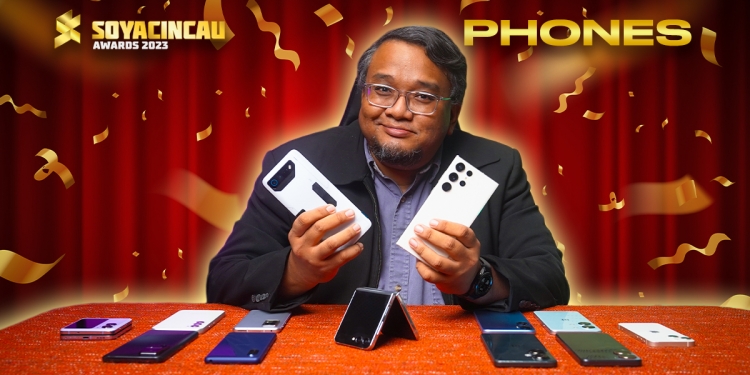It is that time of year again as we close the curtains in 2023, and we acknowledge the good, the bad and the ugly based on the products and ideas hitting the market this year. We have gathered the troops, made a checklist checked it twice, and dished out the official SoyaCincau Awards for 2023.
Like last year, there are a lot of categories to go through, but it is our way to recognise the remarkable effort, products and ideas brought forth by the companies each year. The SoyaCincau Awards 2023 will be split into several categories, so make sure you check them all out below.
In this segment, you will read about all the smartphones that defined 2023 – a change from last year where we included tablets and wearables in the same category. As for the nomination process, we held an open nomination process involving the whole SoyaCincau team to gather the entries for this category from as many POVs as possible.
We then compiled and shortlisted the nominations before a panel of experts to decide on the winners. The panel members consist of Alexander Wong, Najib Hamid, Raymond Saw, Jonathan Lee, Hanif Azrai, Putra Aziz, Sharil Abdul Rahman, Chief Chapree, and Sudarshan Duke, with our social media manager Amalin Aisyah also contributing.
Read the rest of our Awards
- SoyaCincau Awards 2023: The best tablets of the year
- SoyaCincau Awards 2023: The best laptops and gadgets of the year
- SoyaCincau Awards 2023: The best electric vehicles this year
- SoyaCincau Awards 2023: The best telcos this year
Value Phone of the Year
GOLD: Poco F5
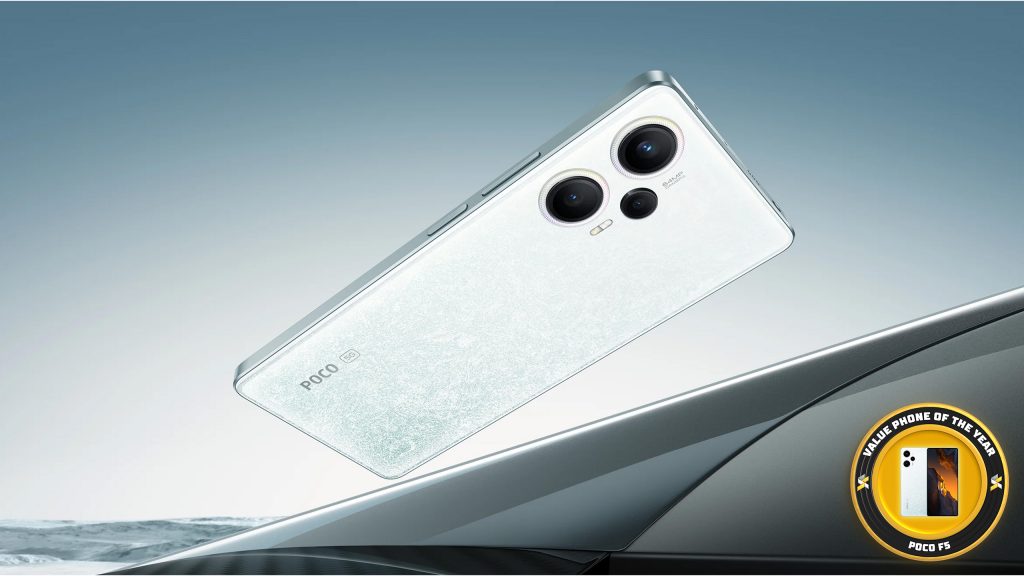
The Poco F5 is our pick for the best value phone of 2023. Why? It’s one of the few phones in its price range to be powered by a Qualcomm Snapdragon chip and the only one in Malaysia to feature the upper-midrange 7+ Gen 2, so it should offer plenty of performance when paired with up to 12GB of RAM.
The rest of the spec sheet reads like a flagship phone’s—a large 6.67-inch AMOLED display with 120Hz refresh rate, a 64MP main camera, a 5,000mAh battery, 67W wired fast charging and even an IR blaster. That’s an awful lot for something that starts from just RM1,399.
Learn more about the Poco F5 here.
SILVER: Samsung Galaxy A34
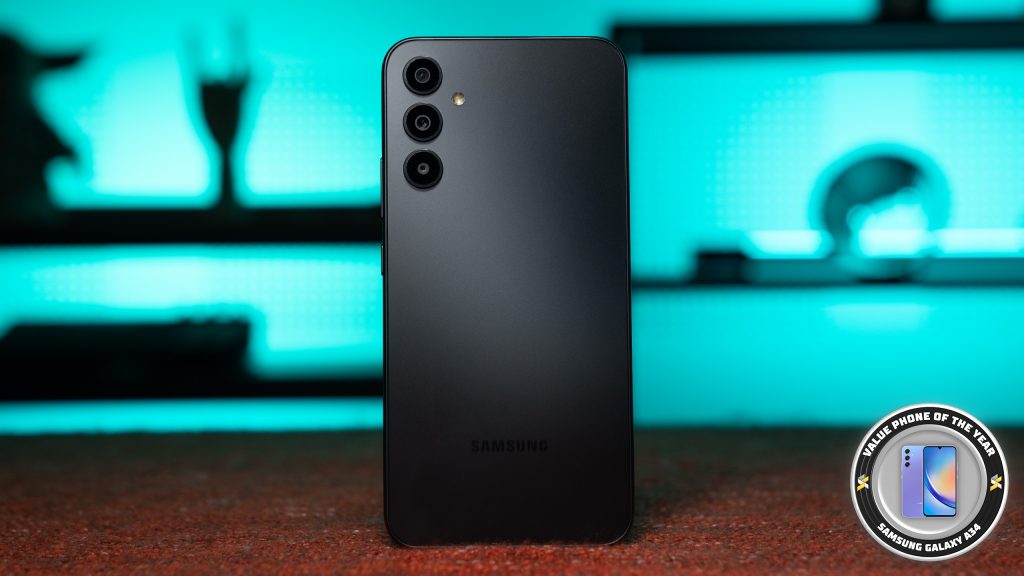
Samsung isn’t very well known for offering value in the midrange segment, but its unmatched four years of Android software support made the Galaxy A series an easy phone to recommend. This year, the company gave the A34 a larger 6.6-inch AMOLED display with a 120Hz refresh rate (finally), plus a MediaTek Dimensity 1080 chip. It’s still mostly adequate rather than spectacular, but the design is now a spitting image of the pretty S23 flagship, while the IP67 dust and water resistance remains a standout feature at this price.
Learn about the Samsung Galaxy A34 here.
BRONZE: Infinix GT 10 Pro
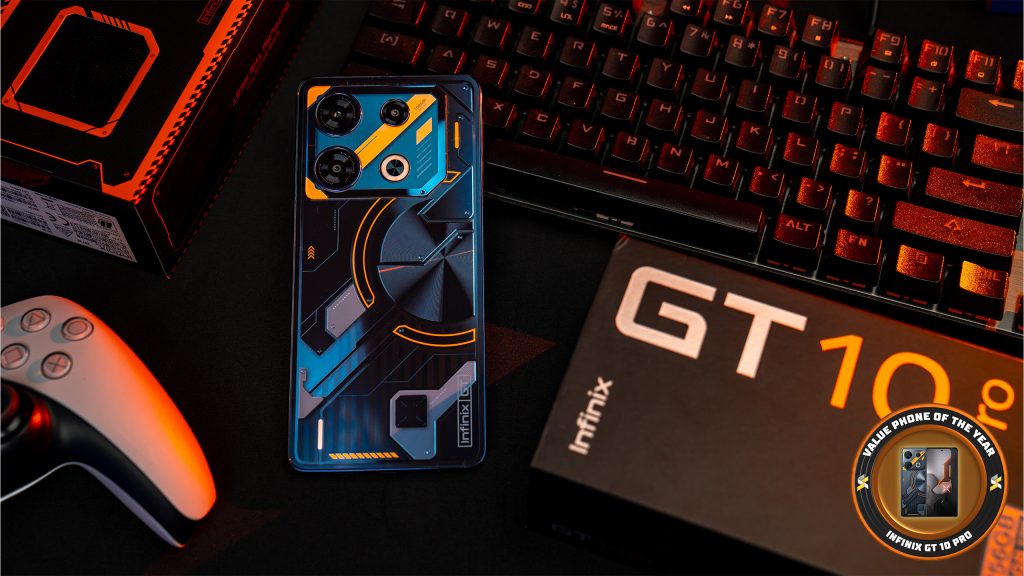
Our Bahasa Malaysia colleague Najib says the Infinix GT 10 Pro is the affordable gaming phone to own. He’s not wrong—for just over RM1,000 you get a MediaTek Dimensity 8050 chip that ran all his favourite games without breaking a sweat, and its large vapour chamber means it won’t burn your fingers even when gaming at full tilt.
Add a 120Hz refresh rate, 45W PD 3.0 fast charging, bypass charging and nifty packaging that doubles as a speaker “amplifier” and you get a complete gaming experience that doesn’t break the bank.
Learn about the Infinix GT 10 Pro here.
Surprise Phone of the Year
GOLD: Xiaomi 13T Series
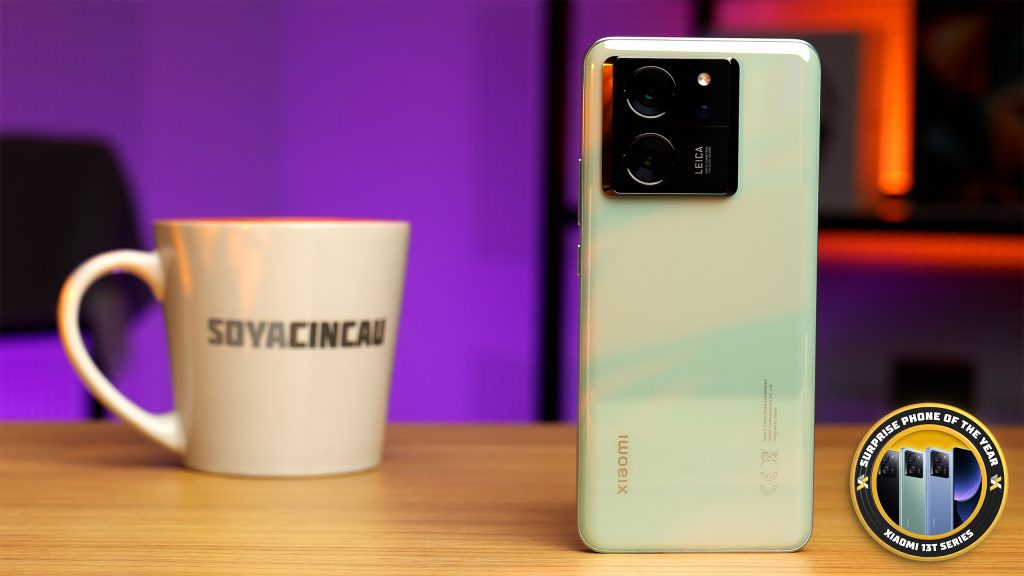
Sometimes, a surprise can appear from out of nowhere to impress us. This time around, it is the Xiaomi 13T series. It is the combination of the features, along with the price that Xiaomi has decided to attach to this smartphone series that made us pick it as the surprise of the year. What do you get with the Xiaomi 13T series?
Plenty! A 144Hz display, up to 12GB of RAM, and even an IP68 rating for water and dust resistance. The Xiaomi 13T features the MediaTek Dimensity 8200-Ultra while the Xiaomi 13T Pro comes with the Mediatek Dimensity 9200 Plus. Not to mention that you get a Leica-tuned camera at the back and a 67W fast charging system for the 13T and 120W for the 13T Pro when you need the 5,000mAh battery to be filled up super quick. Plus Xiaomi promises four major OS updates and five years of security updates for the phones.
Learn more about the Xiaomi 13T here.
Read the full review of the Xiaomi 13T Pro here.
SILVER: Nothing Phone (2)
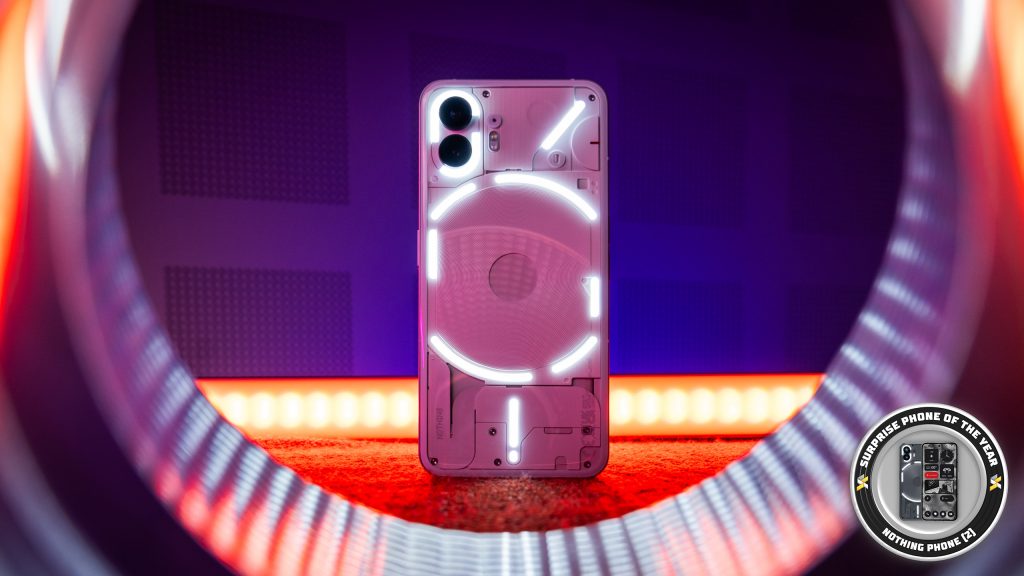
Nothing built on the promise shown by last year’s Phone (1) by finally giving the Phone (2) a flagship chip, last year’s Snapdragon 8+ Gen 1. Meanwhile, the head-turning design has been enhanced with greater functionality for the trademark illuminated Glyph Interface and a curved back that makes it more comfortable to hold.
Its beauty is also more than skin deep—Nothing OS 2.0 brings the futuristic monochromatic aesthetic into the user interface as well, all while keeping much of what makes stock Android so great. Sure, the price has risen commensurately, but this is still a great, unique-looking smartphone to have for under RM3,000.
Learn about the Nothing Phone (2) here.
BRONZE: Poco F5

As we discussed, the Poco F5 is just a gem of a phone in a complete package. You get all the flagship-like features without paying flagship prices, and that is a win in our book—which is why it is on our list twice. Not only that but the fact it can be owned for about half the price of a flagship means that you don’t need to pay through the nose for features you may not need. Xiaomi includes the things that everyone needs and is doing it well enough for the layman.
Learn more about the Poco F5 here.
Gaming Phone of the Year
GOLD: Asus ROG Phone 7
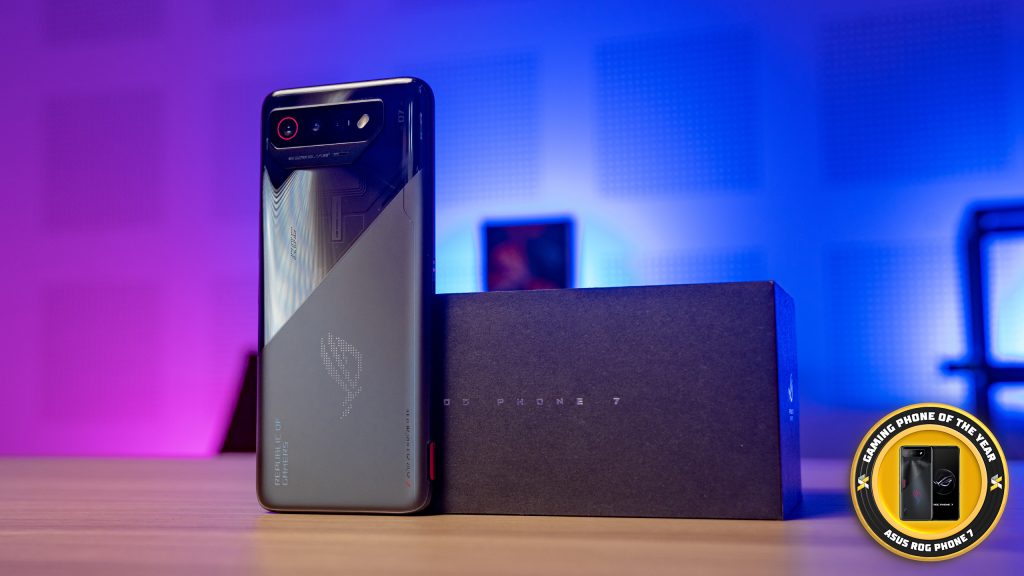
This category took us for a bit of a spin, as these days, most phones on the market can game adequately without carrying the name “gaming phone”. Even so, we’re happy Asus kept its ROG Phone line, and the sixth iteration is one of the company’s best. Yes, the ROG Phone 7’s Snapdragon 8 Gen 2 chip is shared with most “regular” flagships, but it’s the 165Hz refresh rate, beefy cooling setup, touch-sensitive shoulder buttons and broad suite of dedicated gaming tools that take the experience to the next level.
Plus, if you buy the AeroActive Cooler 7, you get enhanced audio thanks to the new built-in subwoofer. And even factoring in the cooler’s price, you save quite a bit over the Ultimate version for what is essentially the same phone.
Learn about the Asus ROG Phone 7 here.
SILVER: Redmagic 8S Pro
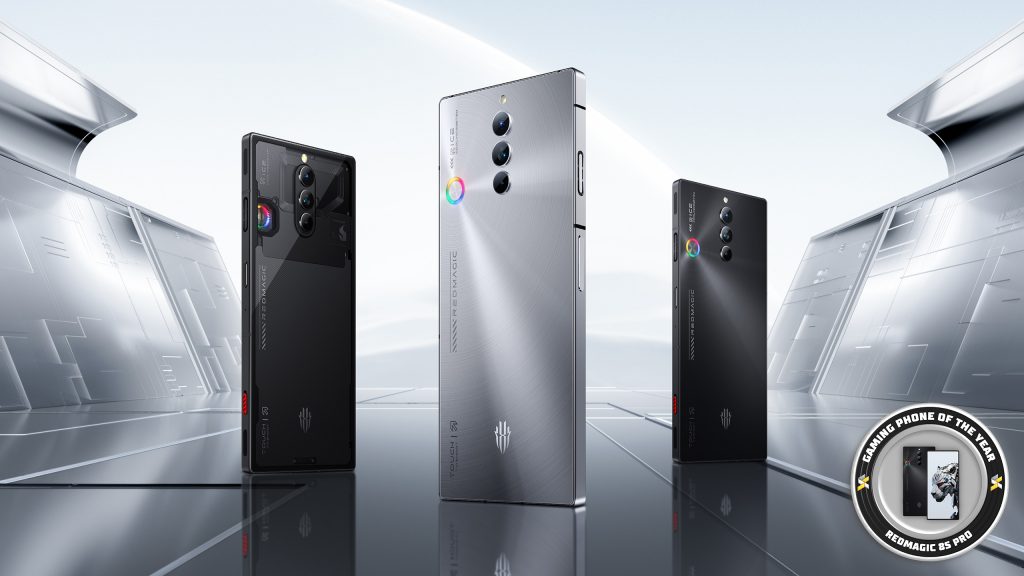
There are boxy phones, and then there’s the Redmagic 8S Pro. This sleek metallic brick oozes presence on the kopitiam table, with its razor-sharp corners and a near-bezel-less screen with an under-display selfie camera. It has performance to spare too, thanks to the overclocked Snapdragon 8 Gen 2 chip—shared with the Samsung Galaxy S23—and a built-in RGB fan that keeps the internals cool.
Like the ROG Phone 7, you get touch-sensitive triggers, several layers of cooling plates and lots of gaming-specific menus to help ensure your marathon PUBG session is an enjoyable one. But its 120Hz refresh rate is quite a bit lower, and ultimately, the Redmagic brand lacks the cachet of Asus’ storied ROG.
Learn about the Redmagic 8S Pro here.
BRONZE: iPhone 15 Pro Max
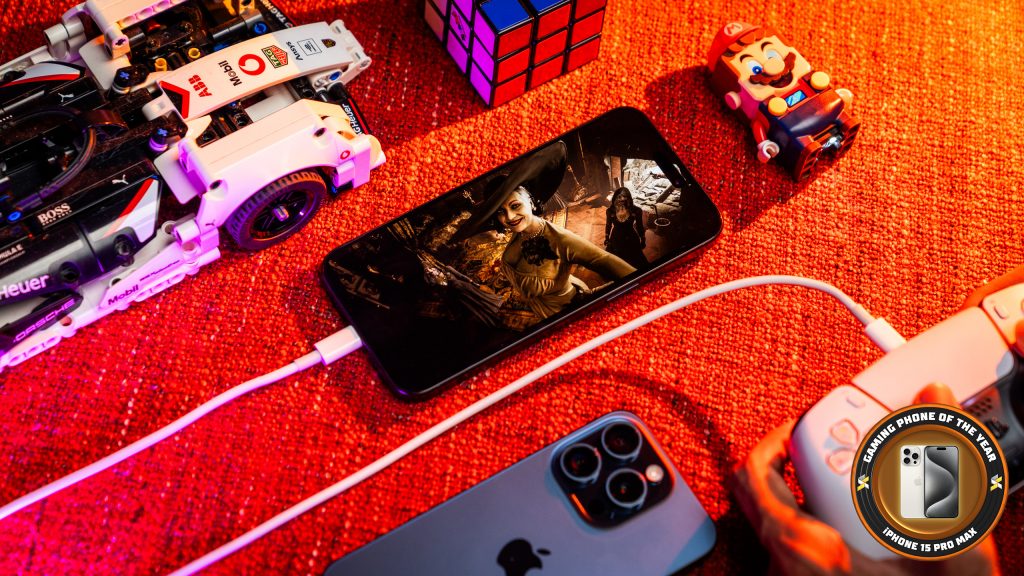
Apple has never really shouted about the iPhone’s gaming performance, even though its class-leading chips and unsurpassed third-party game optimisation make its devices the stealthy default choice for many gamers. With the iPhone 15 Pro Max, however, Cupertino has turned up the heat with the obscenely powerful A17 Pro chip, built on a new 3nm process and boasting hardware-accelerated ray tracing for the first time.
But the company clearly got too excited, because it forgot to beef up the cooling system to combat the increased heat generated. As a result, games stutter often, and the phone gets so hot that sometimes it refuses to charge. Still, the iPhone 15 Pro Max deserves its spot here, as it’s the only device capable of playing AAA games, with Resident Evil Village leading a roster of upcoming titles that also includes Assassin’s Creed: Mirage and Death Stranding. Impressive for something that still fits in your pocket.
Learn about the iPhone 15 Pro Max here.
Foldable of the Year
GOLD: Samsung Galaxy Z Flip 5
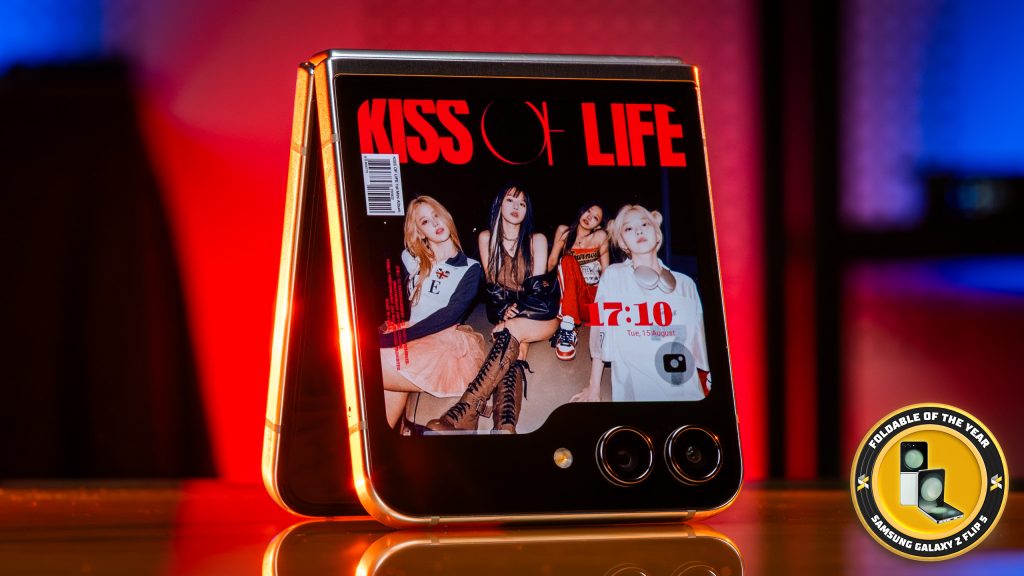
Clearly the it phone of the moment, the Samsung Galaxy Z Flip 5 is fun, powerful, and filled with features—all packed in a compact, snazzy-looking body. That large cover screen is great for running just about any app you can think of, be it social media, the camera or even a game (yes, you can run games on the cover screen). And with the latest Snapdragon 8 Gen 2 for Galaxy chip and decent battery and cameras, this is far more than just a pretty face.
Learn more about the Samsung Galaxy Z Flip 5 here.
SILVER: Oppo Find N3
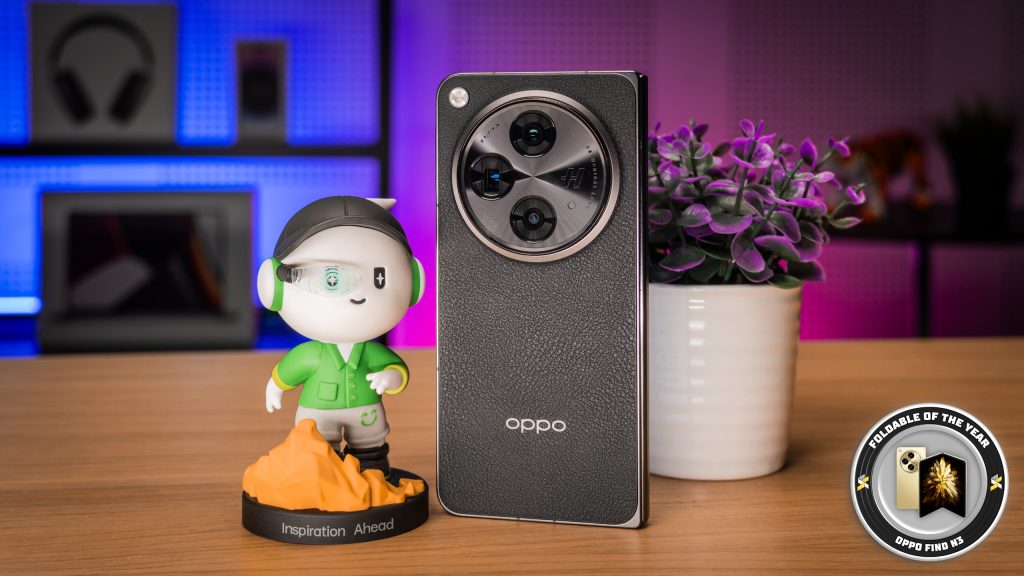
As second places go, this is not a bad place to be. The Oppo Find N3 is where the foldable smartphone reaches its zenith, with an impossibly premium design, a near-creaseless inner display, world-class Hasselblad cameras and conventional cover screen dimensions that make the phone actually usable when closed, unlike a certain competitor. *cough* Samsung Galaxy Z Fold 5 *cough*
It has substance to boot, thanks to a Snapdragon 8 Gen 2 chip, a unique split-screen solution, Samsung-rivalling four years of Android updates and impressive (for a foldable) battery life. The only fly in the ointment is the price: the Find N3 is heinously expensive, more so than even the Z Fold 5.
Learn more about the Oppo Find N3 here.
BRONZE: Oppo Find N3 Flip
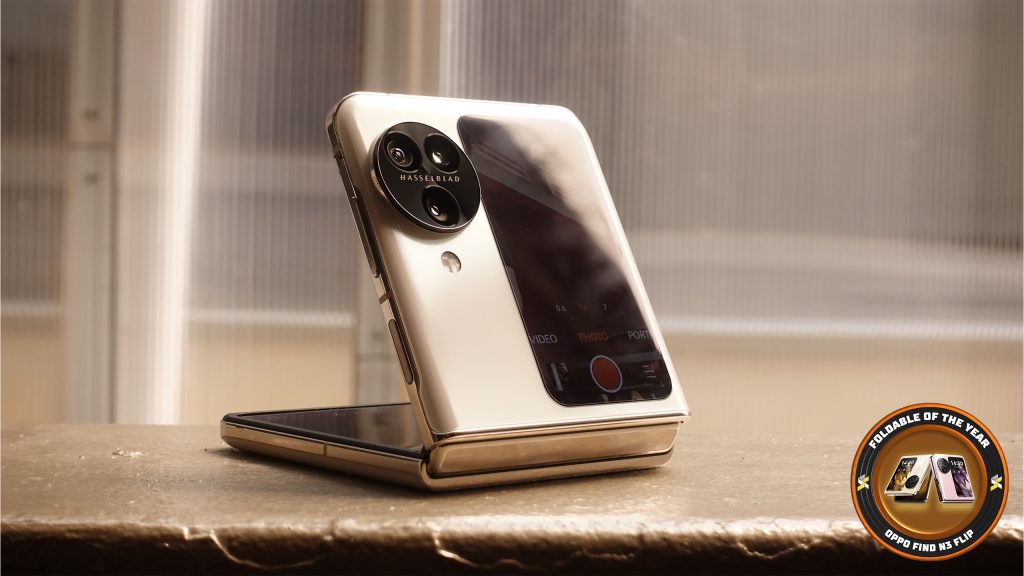
Two out of three for Oppo here, and with good reason: the Chinese tech giant has usurped Samsung as a leader in foldables. The Find N3 Flip builds on the success of its predecessor with an upgraded Hasselblad-tuned triple-camera setup that includes a telephoto shooter—a first for a flip phone. But two things count against it.
Chief of which is the unchanged 3.26-inch vertical cover screen, which matches the orientation of the cameras but also feels quite narrow next to the Z Flip 5’s wider 3.4-inch display, making typing on a keyboard a particular challenge. You’ll also miss the Samsung’s ability to force practically any app to run on the cover screen. This, along with the use of a MediaTek Dimensity 9200 instead of a flagship Snapdragon chip, makes the high price a bit of a bitter pill to swallow.
Learn more about the Oppo Find N3 Flip here.
Best Phone of the Year
GOLD: Samsung Galaxy S23 Ultra
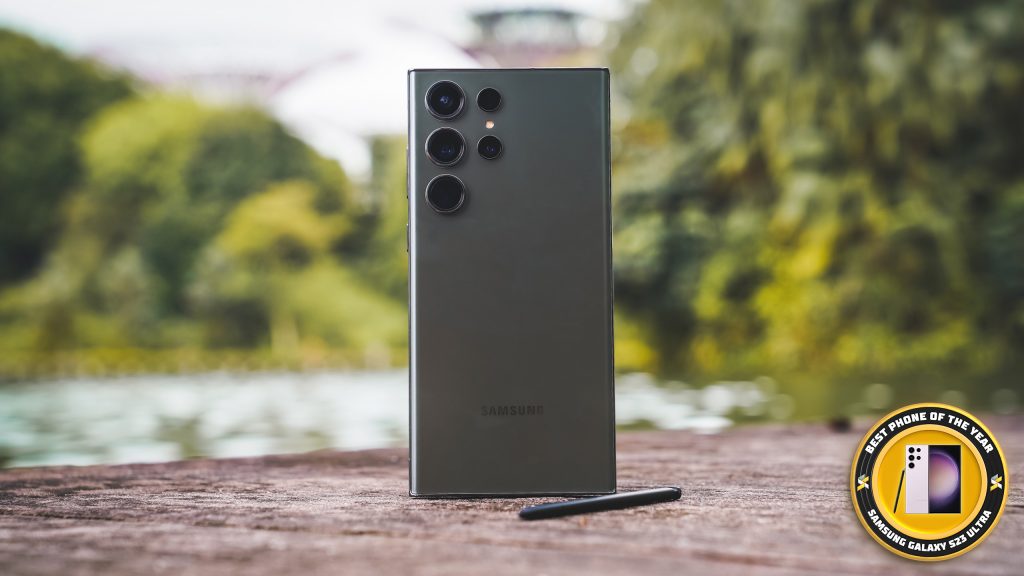
This is it, our best phone of the year. Samsung threw everything and the kitchen sink at the Galaxy S23 Ultra, including a customised Snapdragon 8 Gen 2 for Galaxy chip and a headlining 200MP camera—part of an impressive quad-camera setup will even Space Zoom to the moon (even if it’s mostly AI fakery).
On top of that are all the good bits carried over from the S22 Ultra, including the glorious 6.8-inch 1440p AMOLED display and the built-in S Pen that makes the Ultra a true descendent of the Galaxy Note. Other flagships may have surpassed it in some areas, but as far as all-rounders are concerned, the S23 Ultra is still king.
Learn more about the Samsung Galaxy S23 Ultra here.
SILVER: Oppo Find N3
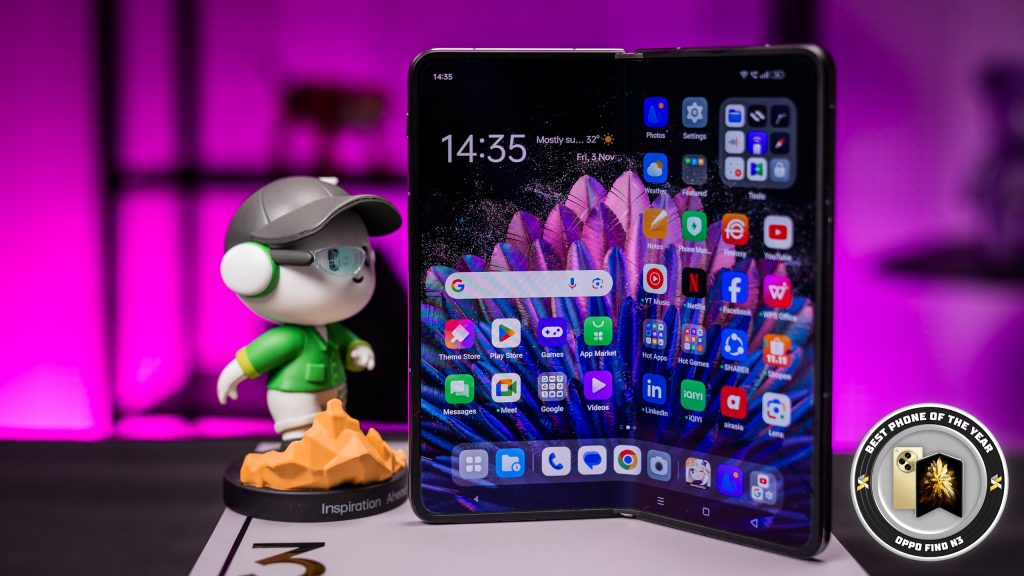
The Oppo Find N3 impressed our colleague Sharil so much that he told us had it arrived earlier in the year, he might have bought one instead of an S23 Ultra. It’s as complete a package as foldables get, enough to make you wonder if, hefty price aside, it can legitimately compete with the best flagships outright.
The fact it was shaded by the S23 Ultra by just one vote among our panel tells you everything you need to know. Oppo may have been late in bringing the Find N series to the global market, but it came out swinging.
Learn more about the Oppo Find N3 here.
BRONZE: Xiaomi 13T Pro
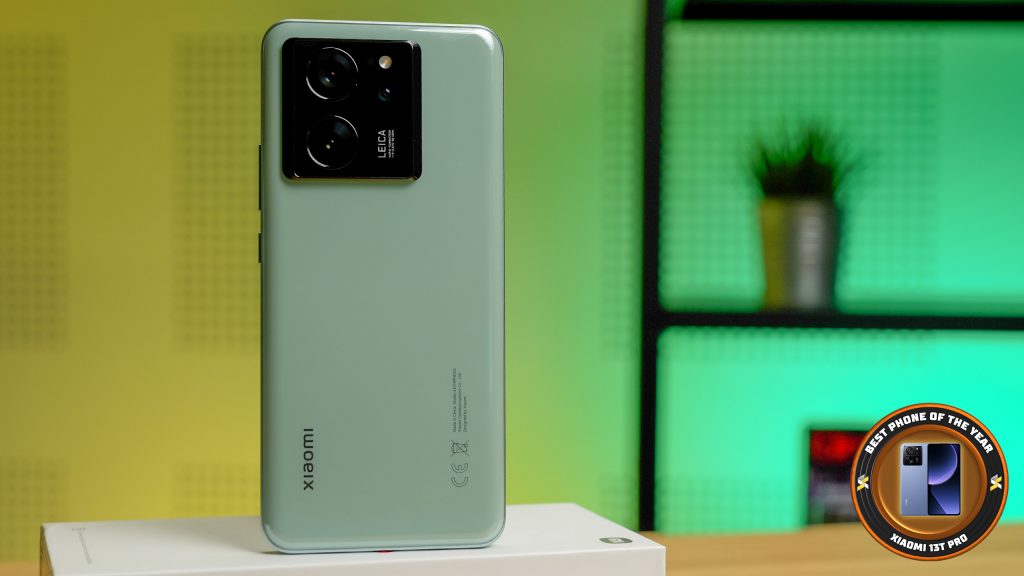
Our third best phone this year goes to Xiaomi’s latest entry—the 13T Pro. We’re happy to see the Chinese giant returning to its roots by delivering the best value and performance for not that much money.
Far from being the unloved middle child, the T series of phones has been rejuvenated; now water resistant and sporting a flagship-class chip, Leica-tuned cameras and excellent software support, the 13T Pro is the complete package. For once, the reasonable price isn’t what sells the device—it just makes an irresistible deal even sweeter.
Learn about the Xiaomi 13T Pro here.

